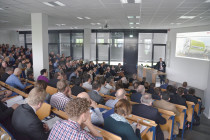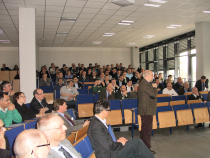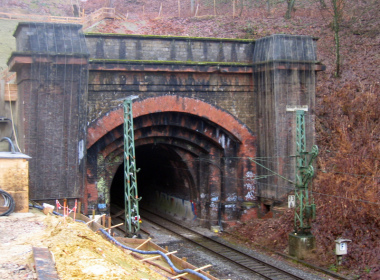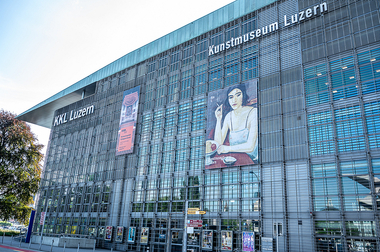Münster Tunnel Engineering Colloquium 2023
At the end of April 2023, more than 200 experts and students came together at the Münster Tunnel Engineering Colloquium for a day of presentations on many topics from the most diverse areas of tunnel construction – such as large-scale railway and road tunnel projects as well as the increasing challenges in maintenance. In addition, aspects of sustainability were a repeated focus of the conference.
Prof. Dr. Dietmar Mähner from the Institute for Underground Construction (IuB) at the Department of Civil Engineering had organized the event together with his team. The program included 11 technical presentations on various key topics from tunnel construction and rehabilitation.
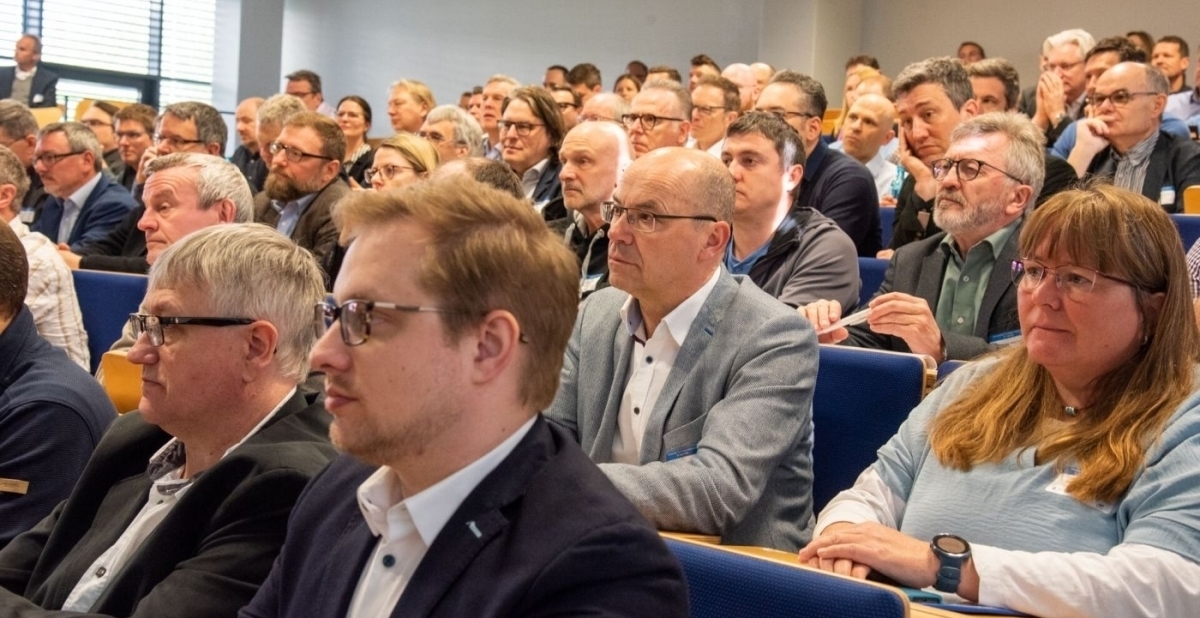 Mehr als 200 Fachleute und Studierende kamen Ende April 2023 zum Münsteraner Tunnelbaukolloquium an der Fachhochschule Münster zusammen
Mehr als 200 Fachleute und Studierende kamen Ende April 2023 zum Münsteraner Tunnelbaukolloquium an der Fachhochschule Münster zusammen
FH Münster/Katharina Kipp
Large-Scale Project Brenner Base Tunnel
The lecture session was opened by Walter Fahrnberger from Müller + Hereth, engineering office for tunnel and rock engineering. He spoke about the major infrastructure project Brenner Base Tunnel as the centerpiece of the future Munich-Verona rail axis. The aim, he explained, is to build an efficient flat rail line through which more goods can be transported in trains and thus in a more environmentally friendly manner. The old Brenner Railway, with gradients of up to 26 percent in places, is not suitable for this task. Two main tunnels and a logistics and service tunnel running underneath are currently under construction. A total of 230 km of underground structures will be built as part of the giant Austrian-Italian project.
Inner-City Solution: Tunnel Replaces Bridge
Dr. Jens Hanel from the Lower Saxony State Authority for Road Construction and Transport presented how bridges can be replaced by tunnels. "The roads are not in good shape, and especially the bridges are not," said the expert. To develop a strategic approach, he said, the “Bridge” master plan was created. This plan includes building a temporary bridge on the Südschnellweg (a major motorway in Hanover) first, dismantling the old bridge and then building a tunnel to replace it. A new bridge would be twice as wide as the old one, which is why the surrounding houses would have the new structure virtually right on their doorstep, making a tunnel the better solution.
Fully Booked In-Person Event
Other presentations were devoted to multi-faceted topics, such as the development of new TBM technologies, possibilities and limits of CO2 reduction in the use of concrete, 3D scanning technology as well as digitalisation in formwork carriage logistics. Various project presentations dealt with the tunnels on the Gelnhausen–Fulda and Hagen–Siegen–Hanau railway lines and the long-distance railway tunnel in Frankfurt.
Organizer Mähner is satisfied that the Tunnel Engineering Colloquium can now take place every two years again after the Covid-related break. “You can really tell that people are excited to be able to participate in an in-person event.” Due to the large number of registrations, a waiting list even had to be created for this year's colloquium. “For us,” says Mähner, “the event was a great success.”

